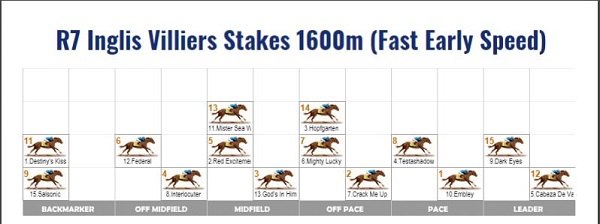This article originally appeared in a series called "Punting Pointers" at this link. We want to share it with our customers as it is very important advice to help you bet better.
This is part six of an eight-part series aimed at educating punters to help take their wagering to the next level. Brad Gray sought the insights of five of the most respected industry figures when it comes to punting, form analysis and bookmaking.
Not all punters have the luxury of being able to commit hours and hours to doing the form every week.
Hypothetically you’ve got 10 minutes up your sleeve, so how best do our experts suggest you use that short period of time?
Do sectionals, speed maps, odds come into play? What elements of the form guide will be of the greatest use to find a few winners?
Dominic Beirne (@domran)
You won’t get anywhere with one 10 minute interval but if you only had 10 minutes to do it every week you’ve got to be learning something.
Your practice has to amount to something. It’s a circular process like teaching oneself to play golf.
Every now and then the ball flies off the club. It’s no use patting yourself on the back though, you’ve got to look back on what you did differently.
Did I have the grip a bit different? Did I take the club back further? Did I follow through properly? What was it about that swing that made the ball come off so well?
So if you are only going to spend 10 minutes doing the form and go to the races to bet those horses, it’s extremely important to know what you did in those 10 minutes to come up with the answers.
Take time to identify the factors that you gravitated to when you picked a winner or loser and take notes of these. After a few short weeks, you’ll have a satisfactory record.
In your 10 minutes of doing form you might focus only on jockey stats or distance stats, for example, you may have focused on these factors and three of the four horses you gravitated towards all shortened in the market which tells you that other people, the smarter public, generally speaking, liked those things.
So if you are spending 10 minutes before the races, you’ve got to spend 10 minutes after. That’s the only way to advance yourself. To know why occasionally the ball flies off the club perfectly.
Rob Waterhouse (@RobWaterhouse)
You’d buy a train ticket to the races!
There are a million strategies and ideas. One of them is finding someone who is smart and backing the same horse. That’s a winning strategy.
You can find all sorts of ideas. Backing at the jockeys nipping at the heels of the top jockeys isn’t a bad one. It’s not hard to win at the races…
The SP is very accurate but not perfect and I think it has always been accurate but not perfect.
Perhaps it’s become a little more accurate over the years because people do a better job doing the form.
Nathan Snow (@snowbet)
One of the key things I look at are the maps and that was always the thing that took time and you had to know the horses.
Now Racing NSW are publishing speed maps, they are a great starting point if you’ve got limited time. I’d take a look at them and then assess from there which sort of horses will get the good runs and the bad runs.
There is a pace comment on there suggesting which ones will be suited. Then I’d look for a good jockey that’s on a runner that has form over the distance.
I think form over the distance is underrated. Different distance races are often run at different tempos and horses can be specific at the distance ranges they like.
You look for 1000m horses. 1100m and 1200m horses. 1300m and 1400m you can group. 1500m and 1600m you can group. There is another break to 1900m to 2100m and then another break to 2400m plus.
RNSW speed map for the Villiers Stakes
Daniel O’Sullivan (@TRBHorseRacing)
First thing I’d say is to start with the early markets. Look at the top two chances in each race and note those that will race up in the lead. Give an extra bonus to those that jump from middle to wide barriers.
I say to people if you are going to the races for a day, look for favourites that look like they’ll lead. Or second favourites that look like they’ll lead.
Wide drawn horses are profitable, leaders are profitable, horses in the market are more profitable than long shots and obviously, you’ve got a much better chance of collecting so there’s fewer horror losing runs.
We spend 60 hours a week doing the form but if you follow those principles, have got a really good market sense, and can get really good prices for your horses, you probably don’t need to do much more to squeeze out a reasonable profit.
If you backed every favourite at top fluctuation you’d make a small profit every year and I’ve said for years that the average hobby punter's best chance of profiting is backing metro favourites.
It’s by far and away the easiest path to making a profit. Sometimes we want to complicate it by being fancy but the principles of success don’t need to be.
Where you'll find the Racing NSW speed maps:




